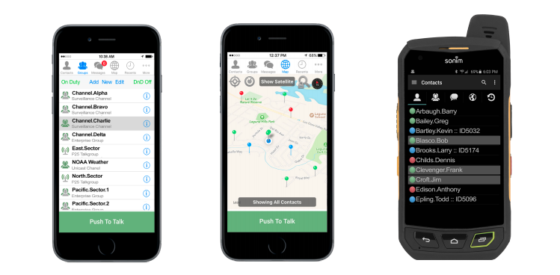Introduction to Broadband and Convergence
What is the Future of LTE?
Is Commercial PTToC Mission Critical?
Public Safety embraced LMR for its ability to provide speedy and reliable narrowband voice communications at the touch of a PTT button. Push-to-Talk Over Cellular (PTToC) tries to emulate the behavior of LMR’s PTT over cellular networks and commercial versions have been around since the days of Nextel’s iDEN. PTT, you will remember, is a must-have feature for critical communications. Already PTToC over LTE is being used to replace LMR in non-mission-critical scenarios. LTE has the data rates and speed to do this, but is PTToC really mission-critical?
Three classes of PTToC exist, two being types of commercial product and one being an open standard.
Carrier-based PTToC services – offered by mobile network operators (e.g. AT&T, Kodiak, Verizon and Sprint) and tightly integrated with their networks.
Over-the-Top (OTT PTToC) products – each of which run as a mission-critical application (e.g. EsChat, Harris BeON, Tait TeamPTT, Motorola WAVE) over the top of a network and is thus independent of any carrier network.

Mission-Critical PTT (MCPTT) – which is the name of a 3GPP initiative based on the Open Mobile Alliance’s OMA-POC technology to define a mission-critical open standard for PTT over LTE.
Non-mission-critical users, as well as some public safety agencies, have taken up carrier-based PTToC as an alternative to LMR. You can see the attraction. It runs on standard smartphones, which are a lot less expensive than public safety grade radios. And instead of owning a comms system, organization can purchase subscriptions and maintenance contracts from a commercial provider. Thanks to its tight network integration, this form of PTToC is fast, runs standard call types, and (maybe with an additional service) can handle a saturated network.
But there is a downside as well. The integration of a carrier-based PTToC offering is challenging both technically and commercially. Engineering reasons can prevent the connection of PTToC from Company A’s carrier to talk groups on Company B’s network and vice versa. The technical incompatibility of the two PTToC carrier integrations makes cross-network connection impossible.
Commercial barriers also exist. Even when two carrier integrations are technically compatible, Company A may not permit its subscribers to use its PTToC to connect to subscribers on another company’s network. It’s business and their proprietary product. Just as it is business for them to restrict the offer of PTToC to a limited range of smartphones. This will not work for mission-critical users, who need the ability to cross-network PTT with something better than the ‘best effort’ service that is standard for commercial networks.
Equally serious is the inability of carrier-based PTToC to support Direct Mode communication, which is direct radio-to-radio (also called ‘simplex’) communication without involving a network. Firefighters depend on Direct Mode to communicate with each other when they are cut off from their network. Carrier-based PTToC is, by design, always mediated by an LTE network.
OTT PTToC overcomes some of these issues. Running as an application over the top of the network, it is to use the phrase ‘carrier-agnostic’ and does not depend on any specific carrier or device. You can therefore PTToC across networks with a wider variety of devices. Since nearly all OTT PTT applications can work on multiple broadband access technologies such as Wi-Fi, LTE and even 3G data on multiple platforms like Chrome, iOS, Android and Windows, this form of PTT is hugely flexible.
However, once you choose your OTT application, you are then locked into a proprietary ecosystem where everyone needs to have the same application. This means that an OTT app from one vendor cannot directly communicate to another vendor’s OTT PTT system, which undercuts the ability of mission-critical agencies to interoperate. Maybe some form of bridging or console patching can serve as a workaround, but the basic problem is the proprietary nature of OTT applications. Moreover, since OTT apps need a network to work, they, like their carrier-based counterparts, are handicapped by an inability to support Direct Mode communications.
 Radio Academy
Radio Academy




